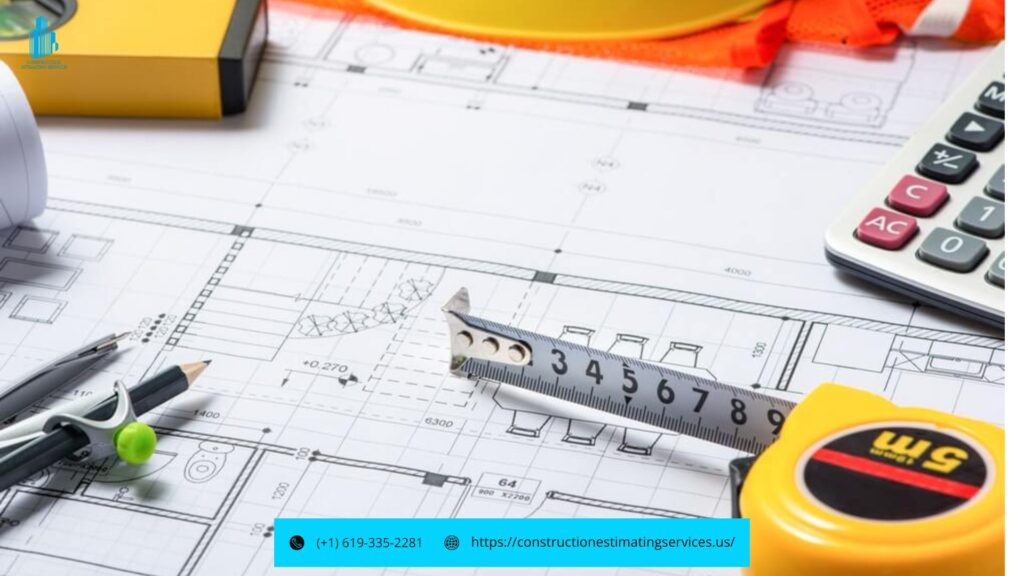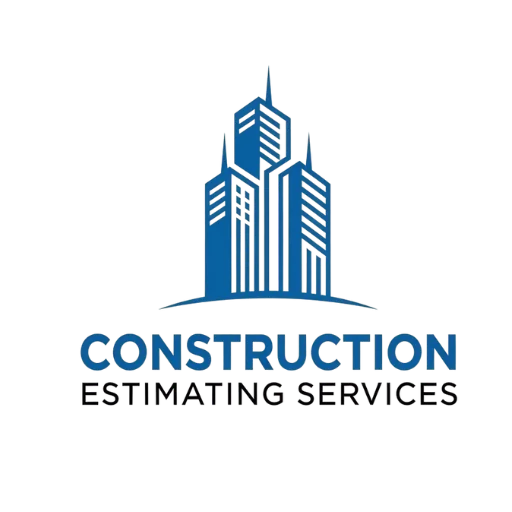Construction estimation isn’t just a numbers game—it’s the lifeblood of any successful project. It’s not about throwing together a quick tally of lumber costs and hoping for the best. A rock-solid estimate is the foundation for planning, budgeting, and ensuring the right resources are in place when you need them. Whether you’re the contractor swinging the hammer, the project manager juggling timelines, or the client signing the checks, mastering construction estimation can make or break your outcome. So, let’s dive deep into what it really means, why it’s critical, the different approaches you can take, and practical, boots-on-the-ground tips to keep your numbers razor-sharp.
What Is Construction Estimation, anyway?
At its heart, construction estimation is about answering one big question: How much is this going to cost? But it’s not just a single figure scribbled on a napkin. It’s a detailed breakdown of every element a project demands—materials like bricks and nails, labor costs for the crew pouring concrete, and even the less obvious expenses like overhead and profit margins. A great estimate isn’t a wild guess; it’s a financial roadmap that guides everyone involved, from start to finish.
For contractors, it’s the tool that helps you decide whether a job is worth bidding on and how to price it without losing money. For clients, it’s the difference between trusting blindly and having confidence that their dream home or office won’t drain their bank account. In short, construction estimation is the glue that binds trust, planning, and execution together, ensuring no one’s left scrambling when the bills roll in.

Why Construction Estimation Matters More Than You Think
A sloppy estimate is like setting sail in a boat with a hole in it—you’re doomed before you even leave the dock. Here’s why getting it right is non-negotiable:
- Controls the Cash Flow: A well-crafted estimate keeps spending in check, preventing a project from spiraling into a financial black hole. No one wants to explain why they’re halfway through a build with no money left.
- Wins Jobs Without Sacrificing Profit: Contractors rely on bids to land work. Bid too low, and you’re stuck working for peanuts; bid too high, and the job goes to someone else. A sharp estimate hits the sweet spot every time.
- Prepares for the Unexpected: Construction is notorious for surprises—think hidden rot in the soil or a supplier delay. A smart estimate includes a cushion to handle these curveballs without derailing the project.
- Maximizes Resource Efficiency: Timing is everything. An accurate estimate ensures your crew, equipment, and materials show up when they’re needed—no idle hands or wasted cash.
- Builds Client Trust: People hate surprises when it comes to money. A transparent, reliable estimate shows clients exactly what they’re paying for, fostering confidence and keeping everyone aligned.
Real-world example: Imagine a contractor underestimating a roofing job by forgetting to factor in weather delays. Halfway through, a storm hits, the crew’s idle, and the budget’s blown. A solid estimate with contingencies could’ve saved the day.
Breaking Down the Pieces of a Construction Estimate
An estimate isn’t one giant number—it’s a puzzle of interlocking parts. Here’s what goes into it:
- Direct Costs: These are the obvious expenses—wages for the workers, lumber for the frame, renting a crane. It’s the tangible stuff that physically builds the project.
- Overhead Costs: Less glamorous but just as critical, these include office rent, insurance, utilities, and even the project manager’s coffee runs. They keep the operation running behind the scenes.
- Contingency Funds: Murphy’s Law loves construction—things will go wrong. A 5-10% buffer ensures you’re covered for surprises like a busted water line or a price hike on steel.
- Profit Margin: Contractors aren’t in this for charity. A reasonable profit (typically 10-20%) keeps the business thriving and rewards the risk.
- Time Estimates: How long will it take? Misjudge this, and you’re either rushing the crew (hello, mistakes) or paying them to stand around (goodbye, budget).
Each piece matters. Skimp on contingencies, and you’re gambling; ignore overhead, and you’re quietly bleeding cash. A balanced estimate accounts for it all.
Types of Construction Estimates: Pick the Right One
Not every estimate is created equal—it depends on where you are in the project lifecycle. Here’s a rundown of the main types:
- Preliminary Estimate: This is your early-stage ballpark figure, based on rough sketches and limited info. It’s perfect for testing feasibility—like figuring out if a $500,000 budget can even build that dream house.
- Square Footage Estimate: Multiply cost per square foot (say, $150) by the project size. It’s fast and simple but lacks precision—use it for quick chats, not final bids.
- Detailed Estimate: The heavy hitter. With full blueprints in hand, you account for every stud, shingle, and labor hour. It’s time-intensive but as close to reality as you’ll get.
- Bid Estimate: This is what contractors submit to win a job. It’s detailed enough to commit to but streamlined to stay competitive. If accepted, it becomes your working budget.
- Change Order Estimate: Mid-project changes—like adding a patio—need their own mini-estimate to adjust costs and timelines without chaos.

Choosing the right type depends on your goal. A client pitching a vague idea gets a preliminary estimate; a contractor sealing the deal needs a bid estimate.
How to Calculate a Construction Estimate: Methods That Work
There’s no one-size-fits-all way to crunch the numbers. Here are the most common methods, each with its strengths:
- Unit Cost Method: Assign a cost to each unit—$10 per square foot of drywall, $50 per light fixture—then multiply by quantity. It’s straightforward but can miss nuances like site conditions.
- Assembly Method: Group costs by systems (e.g., roofing, plumbing) and price each chunk. It’s great for complex projects where individual units don’t tell the whole story.
- Parameterized Estimating: Use data from past projects and adjust for current conditions (inflation, location). It’s like having a cheat sheet from your own experience.
- Quantity Takeoff: Dive into the plans, measure every detail—every board, every bolt—and price it out. It’s painstaking but unbeatable for accuracy.
- Monte Carlo Simulation: For high-risk or unique projects, this runs thousands of “what-if” scenarios to give a cost range. It’s advanced but perfect when uncertainty is high.
Pro tip: Most pros blend methods. Start with a quantity takeoff for precision, then cross-check with past projects to catch outliers.
Real-World Tips to Master Construction Estimation
Want estimates that hold up under pressure? Here’s what the pros do:
- Dig Into the Details: Get every plan, spec, and site report you can. Estimating blind is a fast track to failure—know the soil, the weather, the client’s quirks.
- Learn From History: Past projects are treasure troves. Did lumber spike last summer? Did labor take longer than expected? Adjust accordingly.
- Build in a Safety Net: Add 5-10% for contingencies. When a pipe bursts or a supplier bails, you won’t be left begging for cash.
- Break It Down: Smaller chunks are easier to manage. Estimate the foundation, then the framing, then the finish work—mistakes pop out faster this way.
- Triple-Check Your Math: A misplaced decimal can cost thousands. Run the numbers twice, then have someone else eyeball them. Trust me, it’s worth it.
- Talk to the Crew: Your workers know what slows them down—wet ground, tricky access. Factor their insights into your timeline and costs.
- Stay Current: Material prices fluctuate. Check supplier quotes weekly to keep your estimate fresh.
Example: A contractor I know once saved a job by padding his estimate for a snowy winter. When blizzards hit, he had the cash to keep going while others stalled.
Common Pitfalls to Avoid in Construction Estimation
Even the best can stumble. Watch out for these traps:
- Underestimating Labor: Crews aren’t robots—weather, fatigue, and skill gaps slow things down. Pad your labor hours.
- Ignoring Site Conditions: A rocky lot or tight urban space can jack up costs. Visit the site before you price it.
- Forgetting Inflation: That $2 nail today might be $2.50 next month. Factor in price trends.
- Over-Optimism: We all want to believe it’ll go smoothly. It won’t. Plan for hiccups.
Tools to Make Estimation Easier
Technology’s your friend here. Software like ProEst, PlanSwift, or even Excel templates can streamline calculations, track costs, and flag errors. Pair them with real-world know-how for unbeatable results.

Wrapping It Up: The Power of a Great Estimate
Construction estimation isn’t a side task—it’s the backbone of every project that crosses the finish line. Master the types, nail the methods, and fine-tune the details, and you’ll keep budgets tight, timelines on track, and clients smiling. Whether you’re the one building, managing, or paying, a little expertise and some practical wisdom go a long way. Trust the process, lean on past lessons, and your estimates won’t just be numbers—they’ll be your competitive edge.
Frequently Asked Questions
1. What is construction estimation, and why is it important?
Construction estimation is the process of calculating the total cost of a project, including materials, labor, overhead, and contingencies. It’s crucial because it ensures accurate budgeting, prevents cost overruns, and builds trust between contractors and clients.
2. What are the key components of a construction estimate?
A construction estimate includes:
- Direct Costs (materials, labor, equipment)
- Overhead Costs (office expenses, insurance)
- Contingency Funds (for unexpected issues)
- Profit Margin (typically 10-20%)
- Time Estimates (project duration and scheduling)
3. What are the different types of construction estimates?
The main types are:
- Preliminary Estimate (early-stage ballpark figure)
- Square Footage Estimate (cost per square foot)
- Detailed Estimate (comprehensive breakdown)
- Bid Estimate (submitted to win a project)
- Change Order Estimate (for mid-project adjustments)
4. How do I calculate a construction estimate?
Common methods include:
- Unit Cost Method (cost per unit, e.g., $10/sq. ft.)
- Assembly Method (grouping costs by systems)
- Quantity Takeoff (detailed measurement of materials)
- Parameterized Estimating (using past project data)
- Monte Carlo Simulation (for high-risk projects)
5. What is a contingency fund, and how much should I include?
A contingency fund is a buffer (typically 5-10% of the total budget) to cover unexpected costs like material price hikes, weather delays, or site issues. It’s essential for managing risks without derailing the project.
6. How can I avoid common mistakes in construction estimation?
Avoid these pitfalls:
- Underestimating labor or material costs
- Ignoring site conditions or inflation
- Over-optimism (not planning for delays or surprises)
- Skipping detailed reviews of plans and specs
7. What tools can help with construction estimation?
Popular tools include:
- ProEst (for detailed cost calculations)
- PlanSwift (for quantity takeoffs)
- Excel Templates (for customizable estimates)
- Building Information Modeling (BIM) (for 3D project visualization)
8. How do I ensure my estimate is accurate?
To improve accuracy:
- Review detailed project plans and site conditions
- Use historical data from past projects
- Factor in inflation and market trends
- Include a contingency fund
- Double-check calculations and get a second opinion
9. What is the difference between a bid estimate and a detailed estimate?
A bid estimate is a streamlined version submitted to win a project, while a detailed estimate is a comprehensive breakdown used for planning and budgeting. The bid estimate becomes the working budget if the project is awarded.
10. How can I build client trust through construction estimation?
To build trust:
- Provide a transparent, itemized estimate
- Explain each cost component clearly
- Include a contingency fund and justify it
- Communicate openly about potential risks and how they’re managed
- Deliver accurate estimates that align with the final project cost












